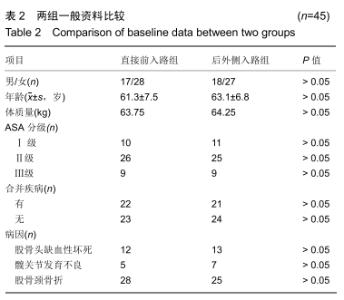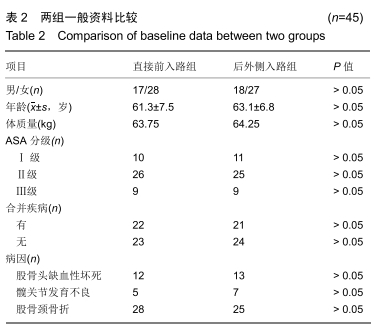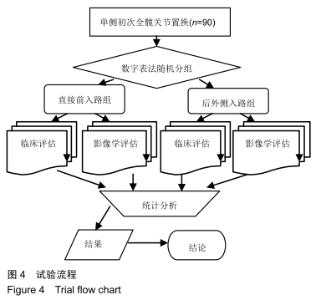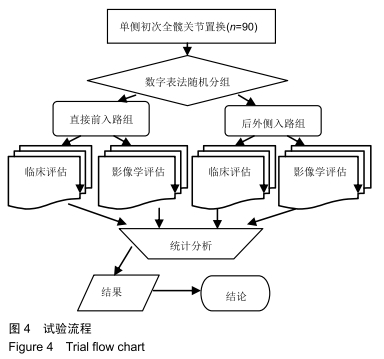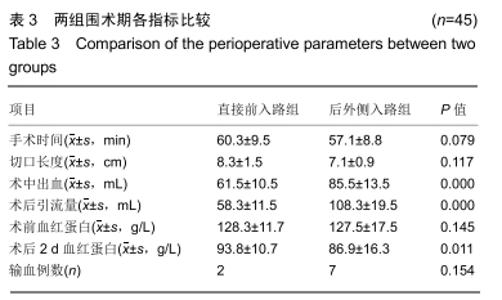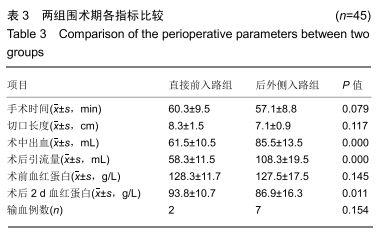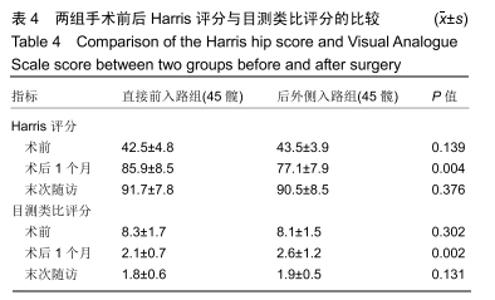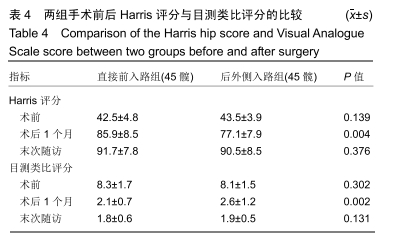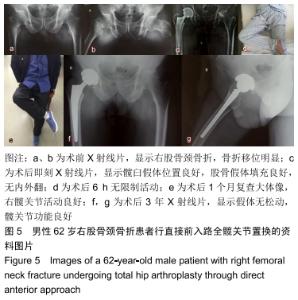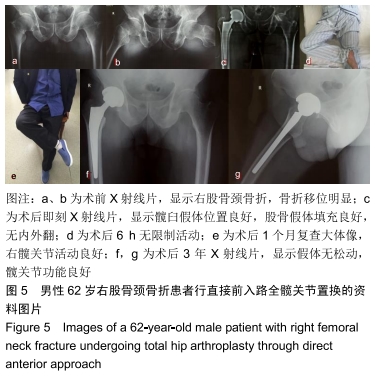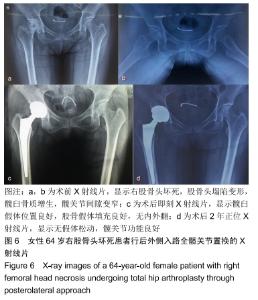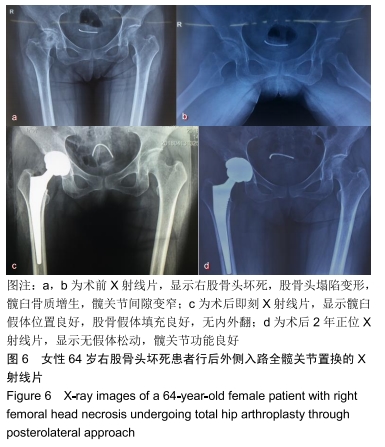[1] CHENG TE, WALLIS JA, TAYLOR NF, et al. A Prospective Randomized Clinical Trial in Total Hip Arthroplasty- Comparing Early Results Between the Direct Anterior Approach and the Posterior Approach.J Arthroplasty. 2017;32(3):883-890.
[2] LEE GC, MARCONI D. Complications Following Direct Anterior Hip Procedures: Costs to Both Patients and Surgeons.J Arthroplasty. 2015;30(9 Suppl):98-101.
[3] PATEL NN, SHAH JA, ERENS GA. Current Trends in Clinical Practice for the Direct Anterior Approach Total Hip Arthroplasty.J Arthroplasty.2019;34(9):1987-1993.e3.
[4] 李永旺,何荣丽,祁辉,等.AML与F2L生物型股骨假体全髋置换治疗的中长期疗效比较[J].中国组织工程研究,2014,18(44): 7053-7060.
[5] 吕明,周一新,柳剑,等.髋臼假体角度的定义、测量方法和临床意义[J].中国骨与关节外科,2013,6(1):73-79.
[6] 许永秋,王文权,卢庆弘,等.髋臼假体定位的研究现状及进展[J].中外医学研究,2018,16(14):178-179.
[7] 康鹏德,沈彬,裴福兴.直接前方入路全髋关节置换术[J].中华骨科杂志,2016,36(15):1002-1008.
[8] TIAN S, GOSWAMI K, MANRIQUE J, et al. Direct Anterior Approach Total Hip Arthroplasty Using a Morphometrically Optimized Femoral Stem, a Conventional Operating Table, Without Fluoroscopy.J Arthroplasty.2019;34(2):327-332.
[9] 赵海燕,夏亚一,康鹏德,等.直接前人路和后外侧人路全髋关节置换术早期功能康复的比较研究[J].中华骨科杂志,2017, 37(19):1185-1192.
[10] FRANSEN B, HOOZEMANS M, VOS S. Direct anterior approach versus posterolateral approach in total hip arthroplasty : one surgeon, two approaches.Acta Orthop Belg.2016;82(2):240-248.
[11] MÜLLER M, TOHTZ S, SPRINGER I, et al.Randomized controlled trial of abductor muscle damage in relation to the surgical approach for primary total hip replacement: minimally invasive anterolateral versus modified direct lateral approach.Arch Orthop Trauma Surg. 2011;131(2): 179-189.
[12] RESTREPO C, PARVIZI J, POUR AE, et al. Prospective randomized study of two surgical approaches for total hip arthroplasty.J Arthroplasty. 2010;25(5):671-679.e1.
[13] ZAWADSKY MW, PAULUS MC, MURRAY PJ, et al. Early outcome comparison between the direct anterior approach and the mini-incision posterior approach for primary total hip arthroplasty: 150 consecutive cases.J Arthroplasty. 2014;29(6):1256-1260.
[14] ALECCI V, VALENTE M, CRUCIL M, et al. Comparison of primary total hip replacements performed with a direct anterior approach versus the standard lateral approach: perioperative findings.J Orthop Traumatol.2011;12(3): 123-129.
[15] NAKATA K, NISHIKAWA M, YAMAMOTO K, et al. A clinical comparative study of the direct anterior with mini-posterior approach:two consecutive series.J Arthroplasty. 2009; 24(5):698-704.
[16] 俞银贤,马金忠.微创直接前方入路髋关节置换术相关研究[J].国际骨科学杂志,2014,35(1):33-35.
[17] SPAANS AJ, VAN DEN HOUT JA, BOLDER SB. High complication rate in the early experience of minimally invasive total hip arthroplasty by the direct anterior approach .Acta Orthop 2012;83(4):342-346.
[18] MOSKAL JT, CAPPS SG, SCANELLI JA. Anterior muscle sparing approach for total hip arthroplasty. World J Orthop. 2013;4(1):12-18.
[19] 李森磊,杨先腾,田晓滨,等.直接前入路和前外侧入路全髋关节置换术后的早期功能恢复对比[J].北京大学学报(医学版), 2019,51(2):268-272.
[20] SARIALI E, KLOUCHE S, MAMOUDY P. Investigation into three dimensional hip anatomy in anterior dislocation after THA.Influence of the position of the hip rotation centre.Clin Biomech(Bristol,Avon).2012;27(6):562-567.
[21] RUDIGER HA, BETZ M, ZINGG PO, et al. Outcome after proximal femoral fractures during primary total hip replacement by the direct anterior approach.Arch Orthop Trauma Surg.2013;13(4):569-573.
[22] 桑伟林,朱力波,马金忠,等.微创直接前入路全髋关节置换术[J]. 国际骨科学杂志,2010,3(5):266-267 .
[23] ITO Y, MATSUSHITA I, WATANABE H, et al. Anatomic mapping of short external rotators shows the limit of their preservation during total hip arthroplasty .Clin Orthop Relat Res.2012;470(6):1690-1695.
|
